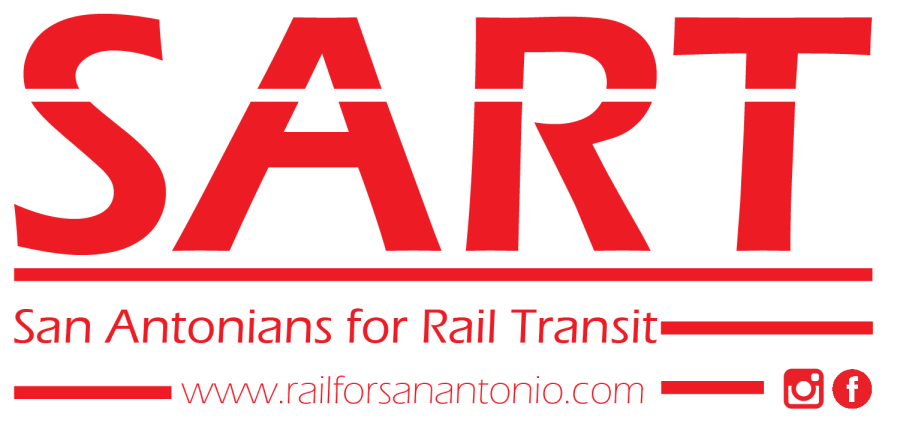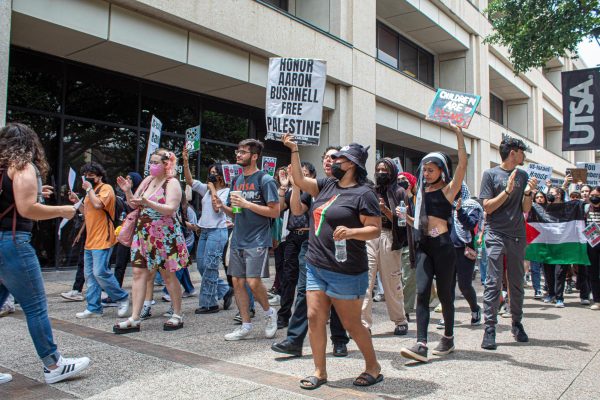San Antonio group advocates for reliable public transport
October 25, 2022
San Antonio is an ever-growing city, bolstering a population of approximately 1.5 million people. Public transportation is necessary for many individuals, especially in a city developing as rapidly as San Antonio. San Antonians for Rail Transit (SART) was founded with the inherent goal of pushing San Antonio toward reliable public transportation.
“We live in the seventh largest city in the United States, and it is by far the largest without any form of intra-city rail transit,” Jesse Harasta, SART lead organizer and associate professor of instruction in the Academic Inquiry and Scholarship Department, said. “[San Antonio’s] intercity rail transit is just woeful as well. We live so close to Austin for example, and as you know the traffic on I-35 is terrible. There really ought to be hourly trains leaving from downtown, back and forth in either direction. [San Antonio] is the only city of its size within Texas to have no form of public rail transit. Austin, Dallas, Fort Worth and El Paso all have something, whether that be streetcars, light rail or various other forms. [San Antonio] has nothing, and the traffic shows that.”
With public transportation being provided to San Antonio residents through VIA Buses and the Greyhound, SART stands firm on the idea that a city as large as San Antonio needs to expand its public transport options.
“We’re not opposed to expanding [bus transport] but what we believe is that a city [with a population] over a million people needs to have a multimodal form of transit,” Harasta said. “A modern transit system has central spines that are large, fast-moving rail, and the benefit to that rail is that it can carry hundreds of people on a single train, and it doesn’t compete with other traffic. That gets people moving through the city quickly in large numbers and then they would be feeding into what would be your feeder buses, VIA, streetcars and other forms of transit. The problem with buses is that they function on the same lanes that cars do. When there is traffic, cars and buses will be caught in that as well. While buses may help the problem by taking cars off the road, it doesn’t fully alleviate the traffic problem. That’s why we need a multimodal transit system.”
“I think we can look over at the grand experiment to the east of us in the form of the Katy Freeway,” Harasta said. “The freeway connecting Houston to Katy has been expanded over and over again, and it’s become one of the largest freeways in the world … and yet every time they’ve expanded, the traffic increased to meet the demand. This is something we call induced demand. When you widen roads and add lanes, people shift their driving and traffic increases, so you keep widening the roads and in response, traffic gets worse. With how many people are on the Katy Freeway, it has become dangerous. This is one of the reasons people are pushing for more bike lanes, to get more cars off the roads and give people the option. SART believes that somebody needs to be doing that, but for trains. We need to put spine and backbone into our politicians and make them know what we need, to give us the modern infrastructure we need.”
While SART is pushing for rail transit, there have been a few concerns that have put their goal into jeopardy with a controversial rail project.
“[San Antonio] is built on a giant limestone sponge, right? Limestone is already hard enough to get through and then you realize how much harder that is with water beneath our feet,” Harasta said. “Elon Musk’s proposal for a rail tunnel in San Antonio is ridiculous. We know that he … pitched his tunnel idea to purposefully undermine support for high-speed rail in California … it’s clear that his proposals for San Antonio are unrealistic and may take away from what we’re pushing for.”
Rail transit has the possibility of decreasing air emissions in downtown San Antonio, according to research by the University of California, Los Angeles, which shows that taking public transportation can help reduce CO2 emissions by at least 45%.
“We’re talking about a light rail system that is electrified through this city. We’re talking about a significant decrease in particles and airborne pollution that cause illness. We know that there [are] greater levels of asthma for children near highways, that would be alleviated with fewer cars,” Harasta said.
“I feel that sometimes San Antonians seem to feel like they don’t deserve the best things, but we deserve a world-class transit system that’s at least comparable to any city of our size,” Harasta said.
For more information refer to SART’s website at https://www.railforsanantonio.com/.













Rebecca • Oct 28, 2022 at 1:56 pm
Agreed… let’s go SA!! Decrease traffic jams, decrease car accidents, decrease road rage incidents… SA needs this !!
Jesse Harasta • Oct 28, 2022 at 10:26 am
San Antonio is a world class city and its residents should settle for nothing less than a world class transit system.